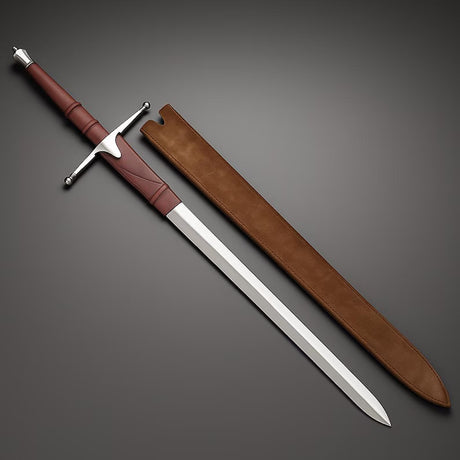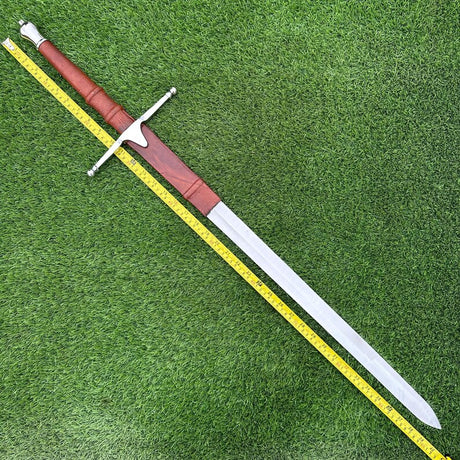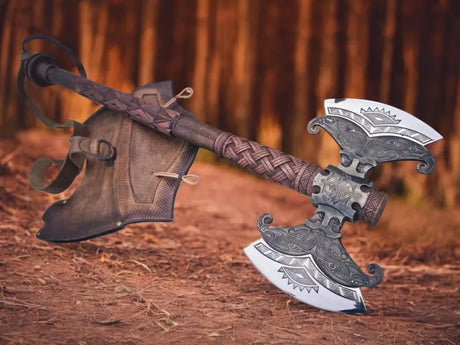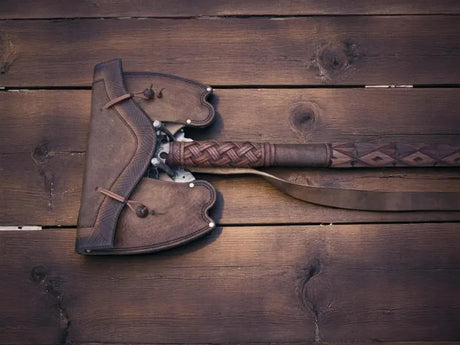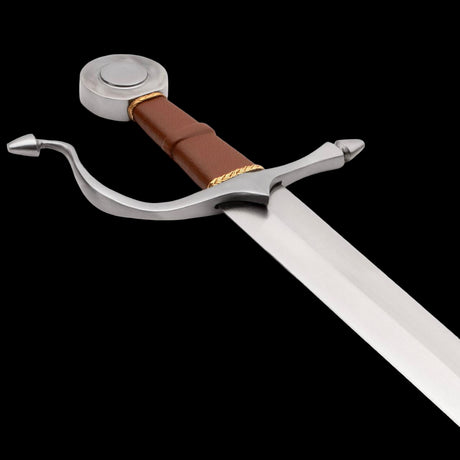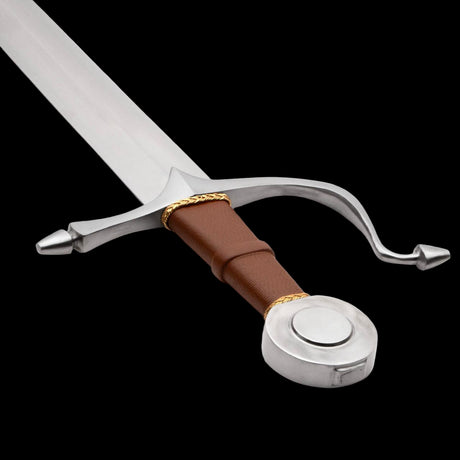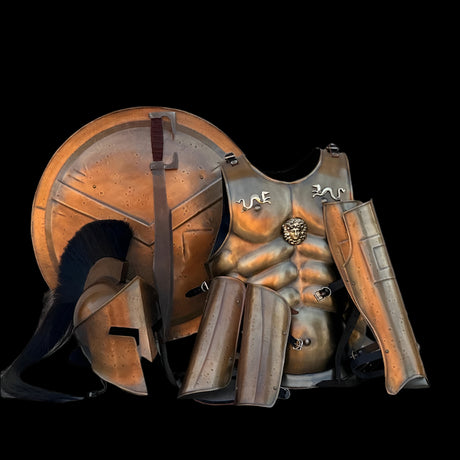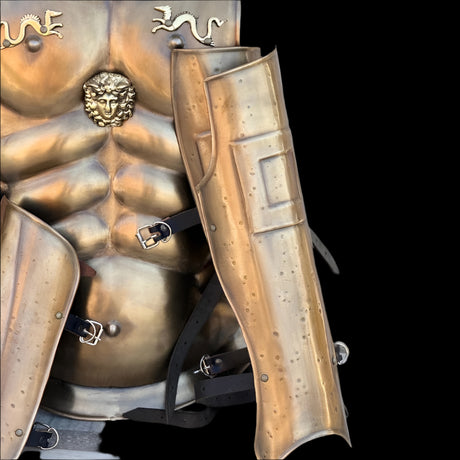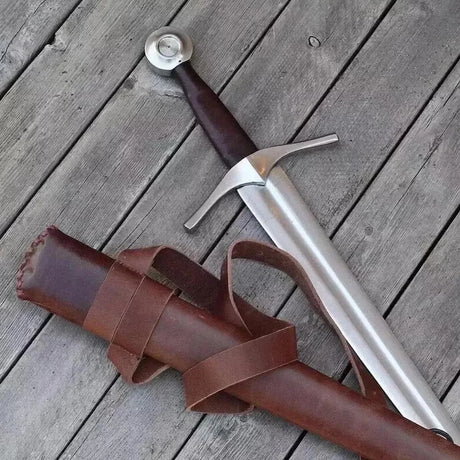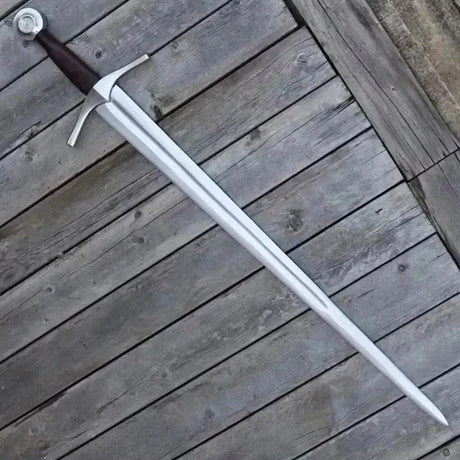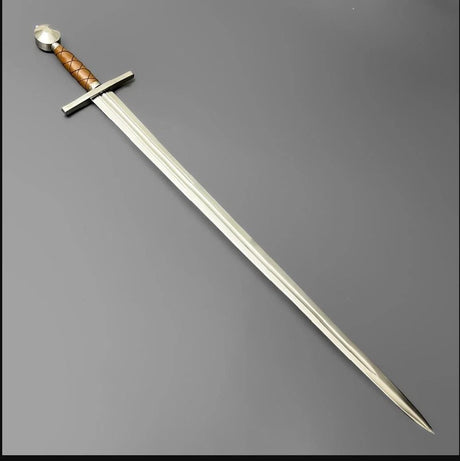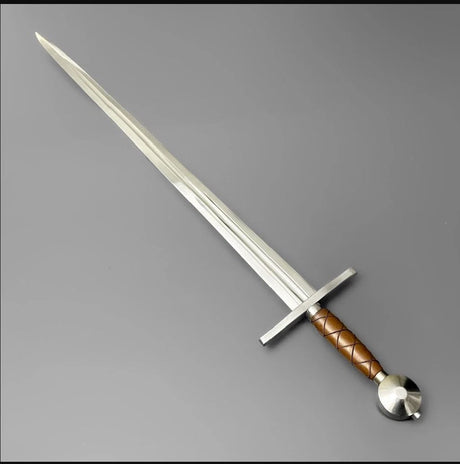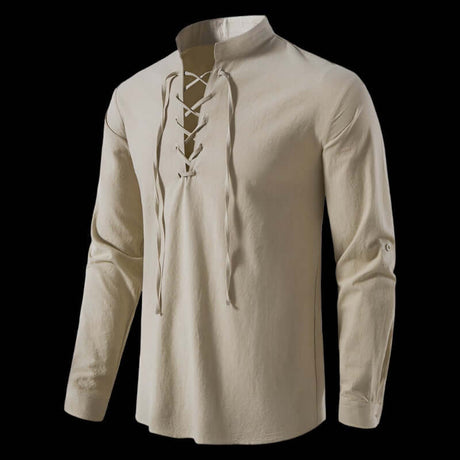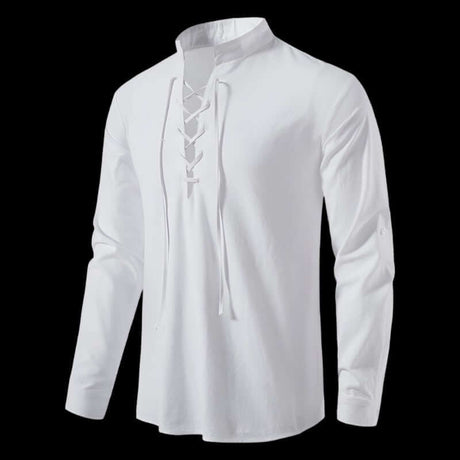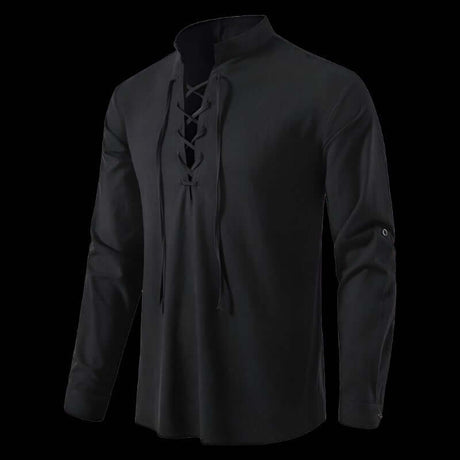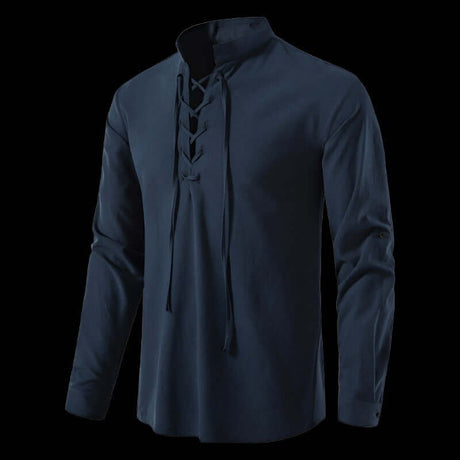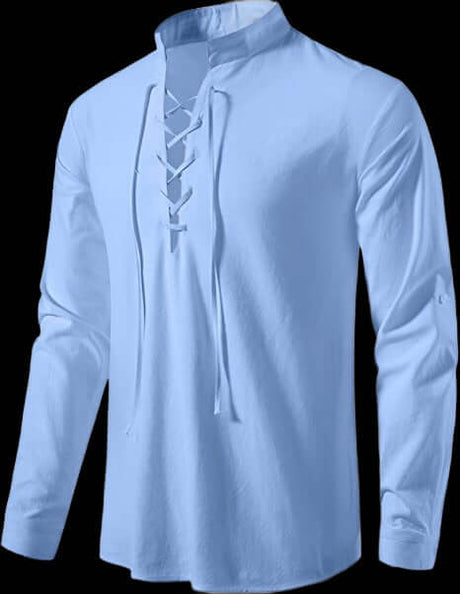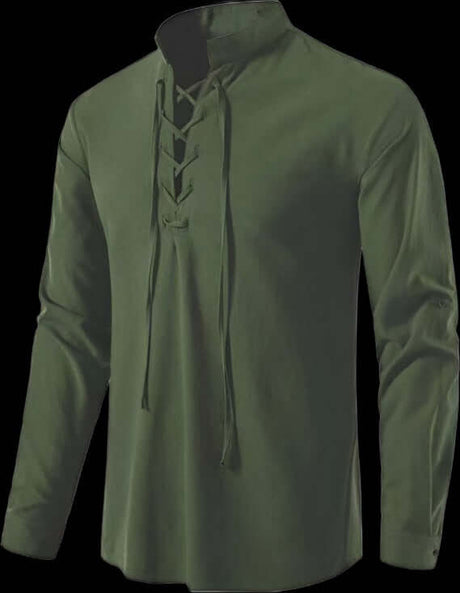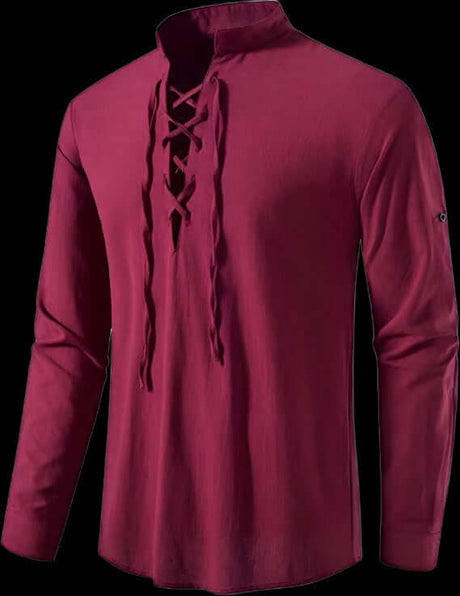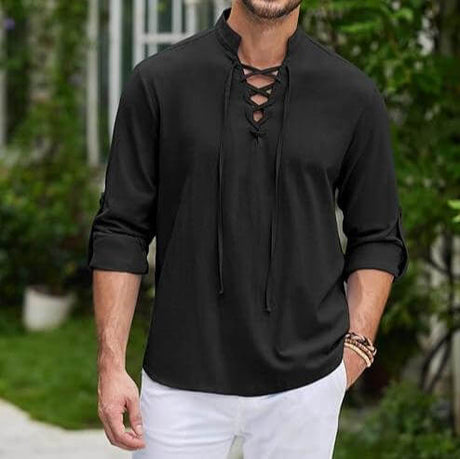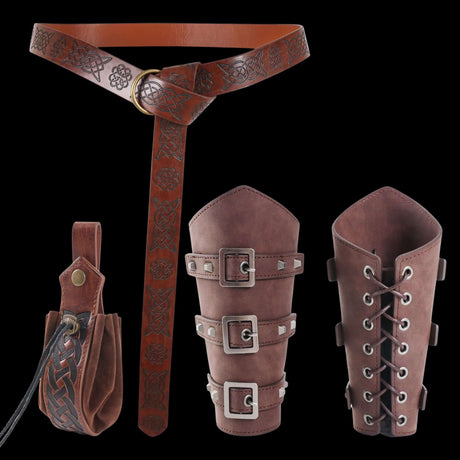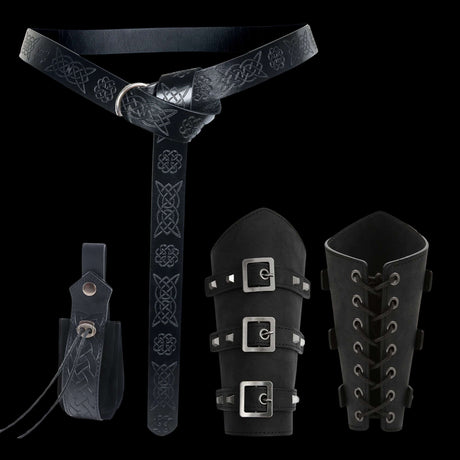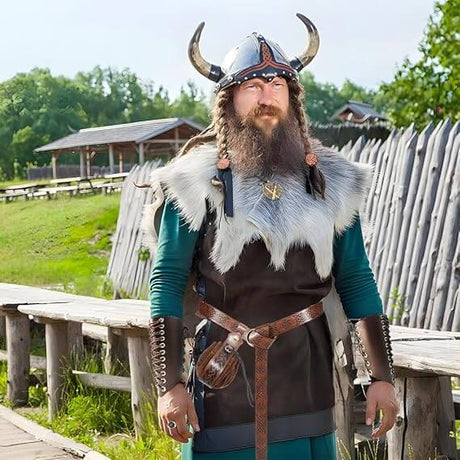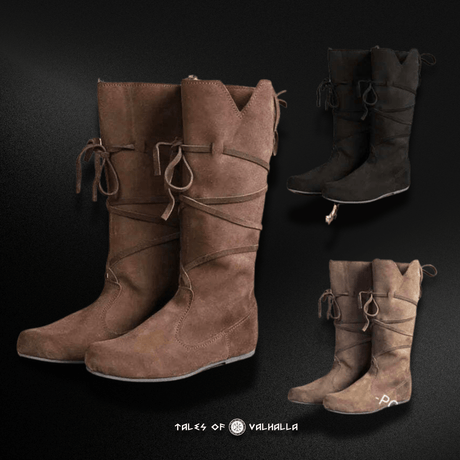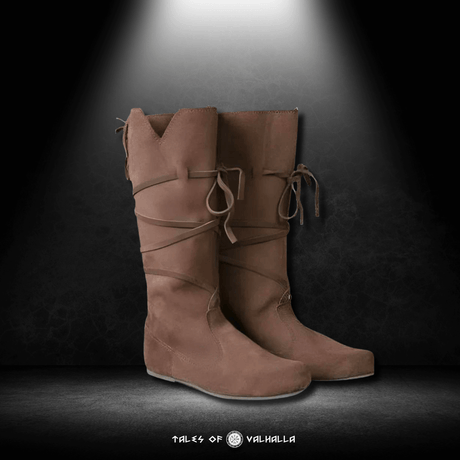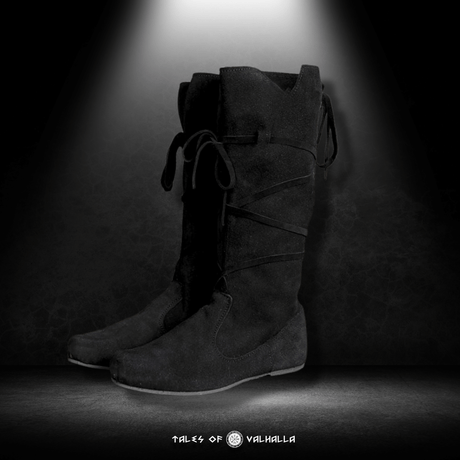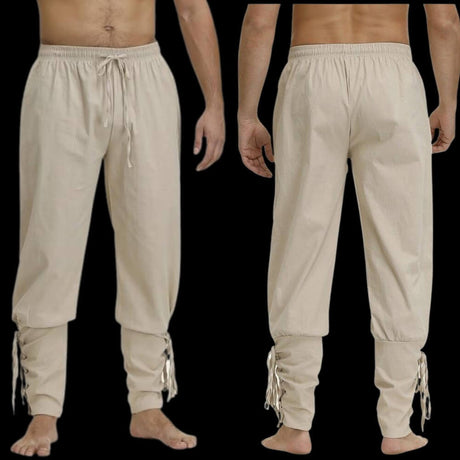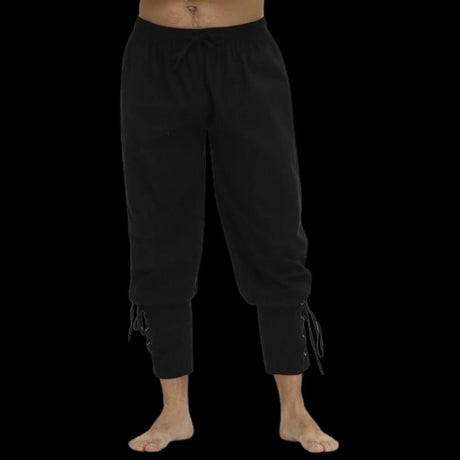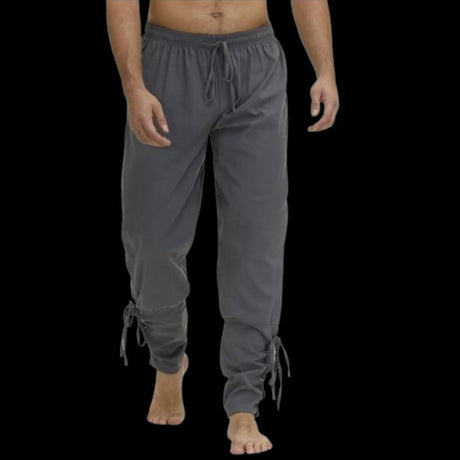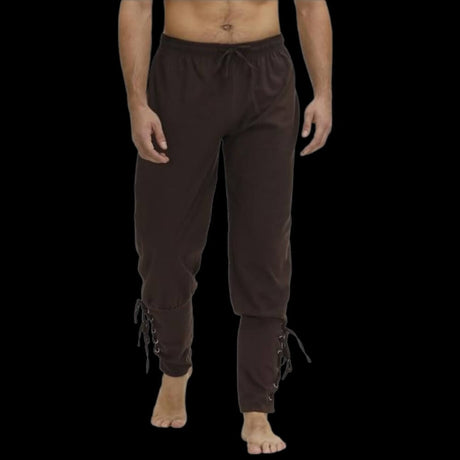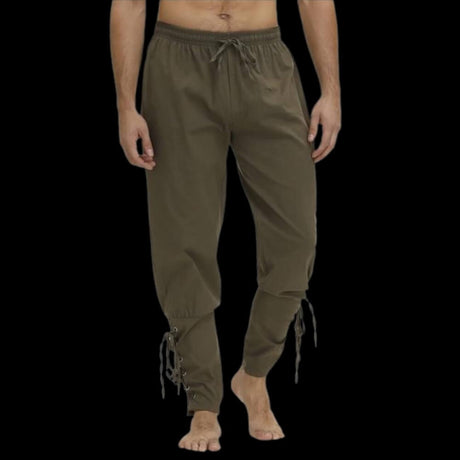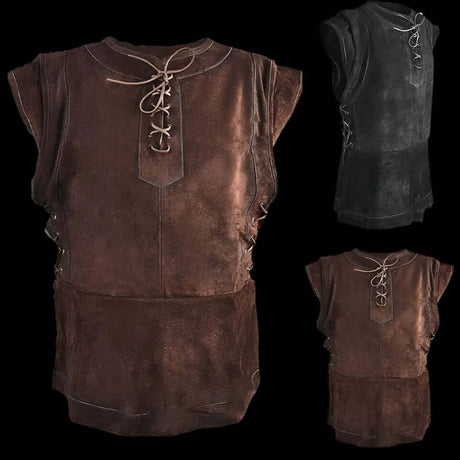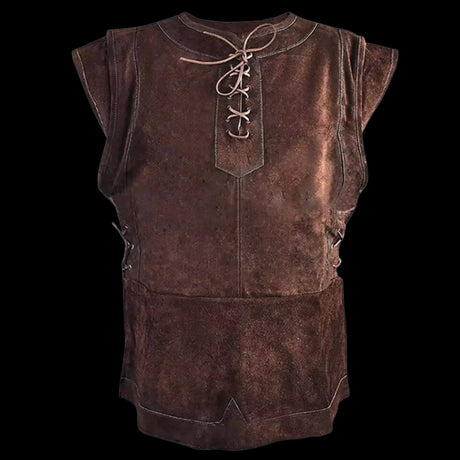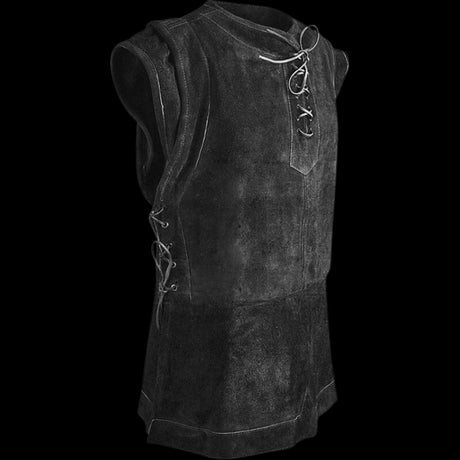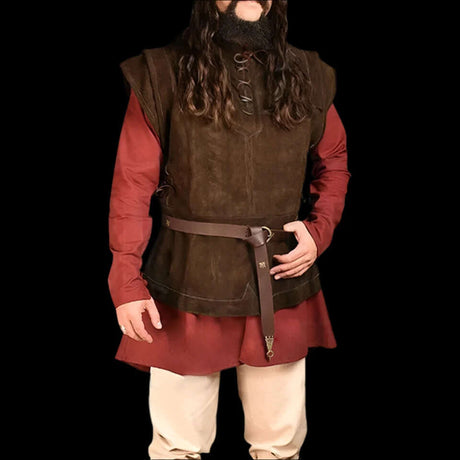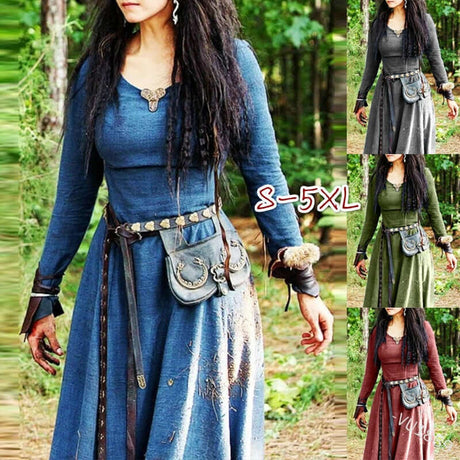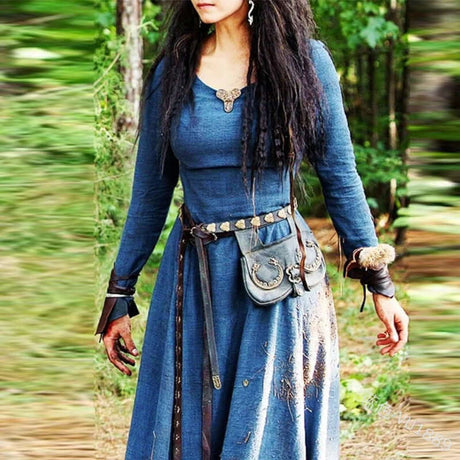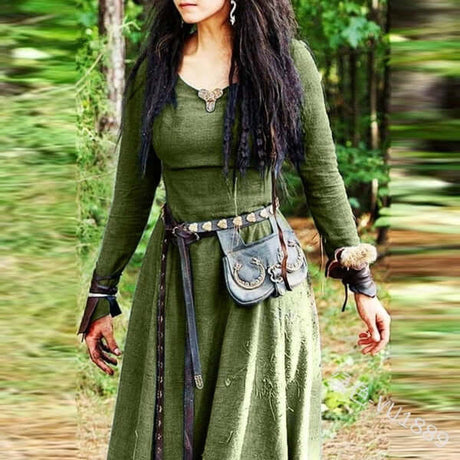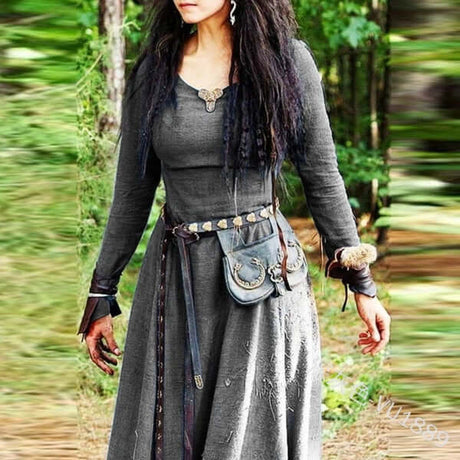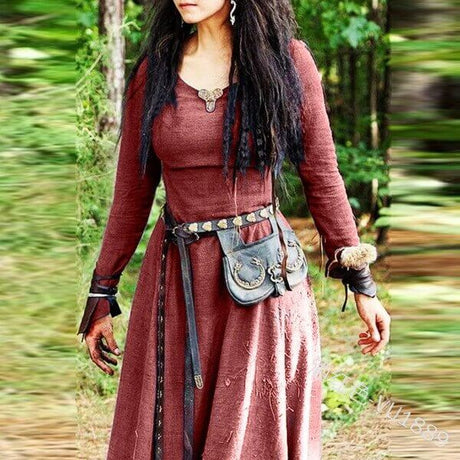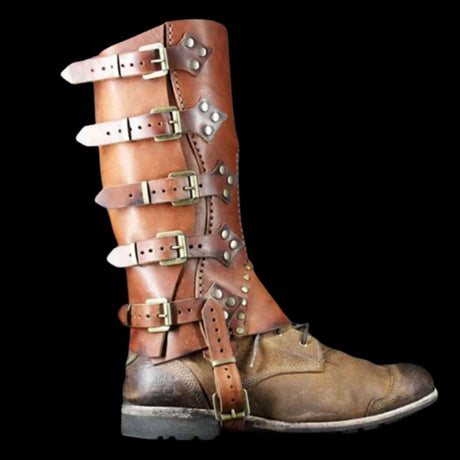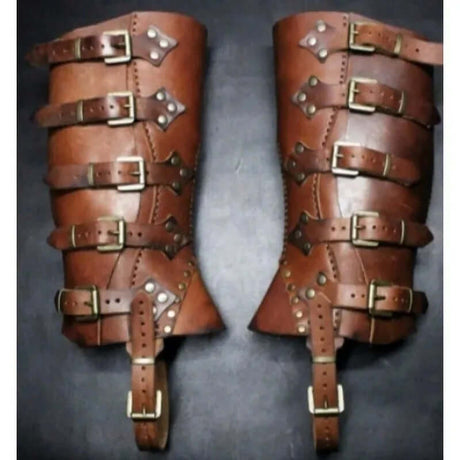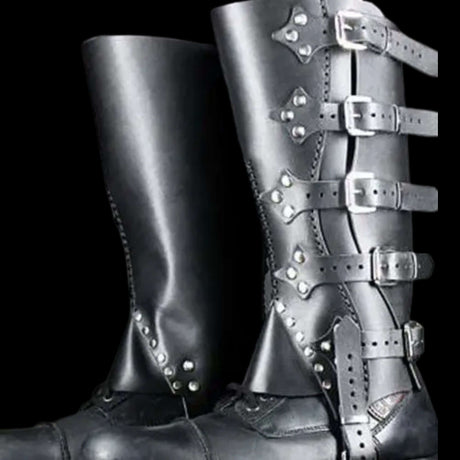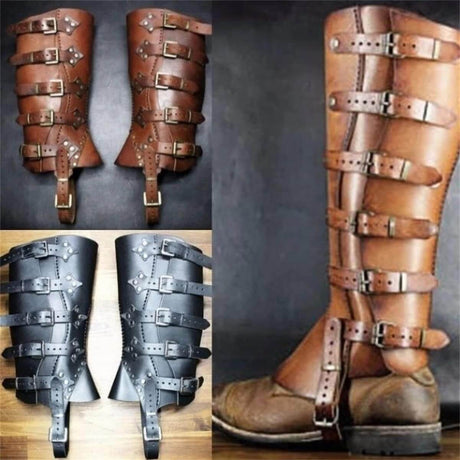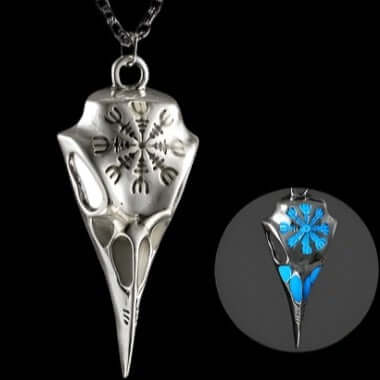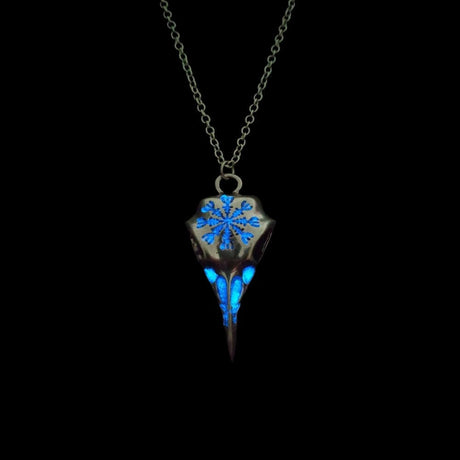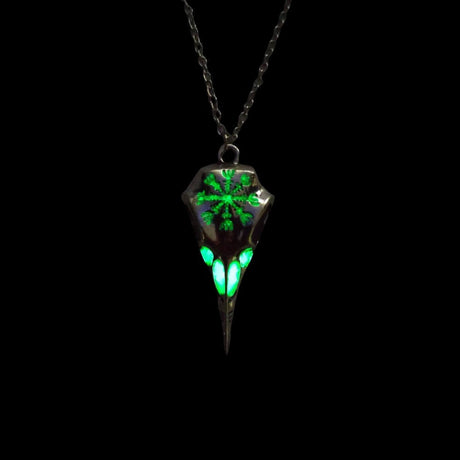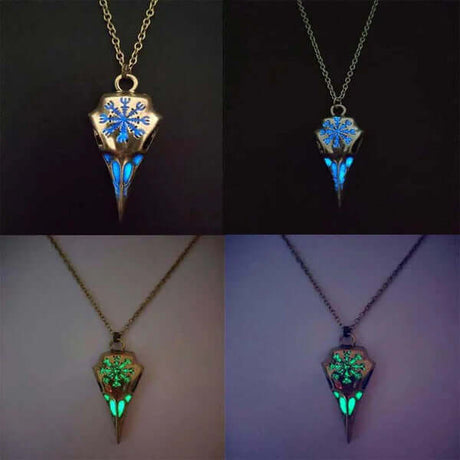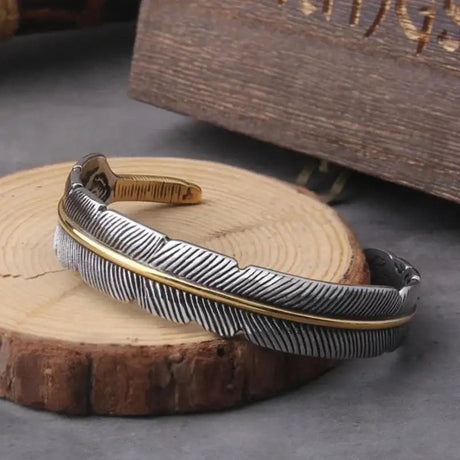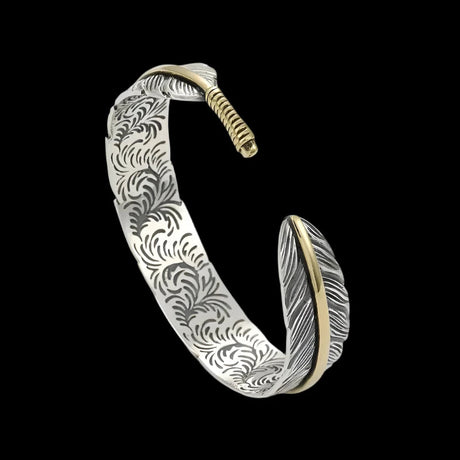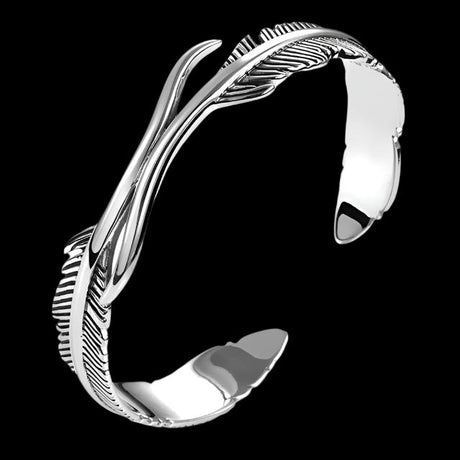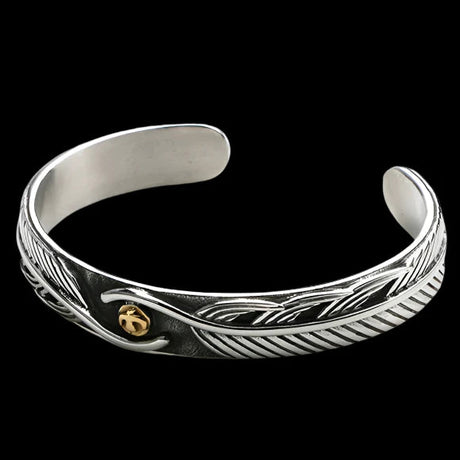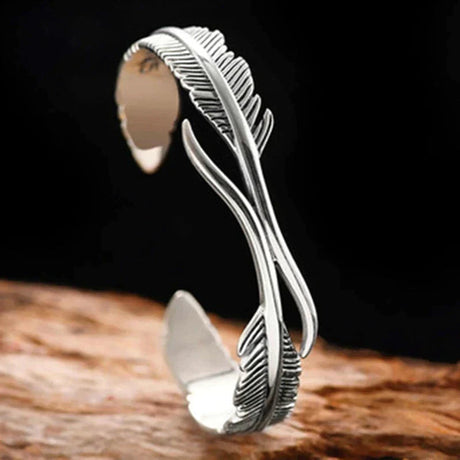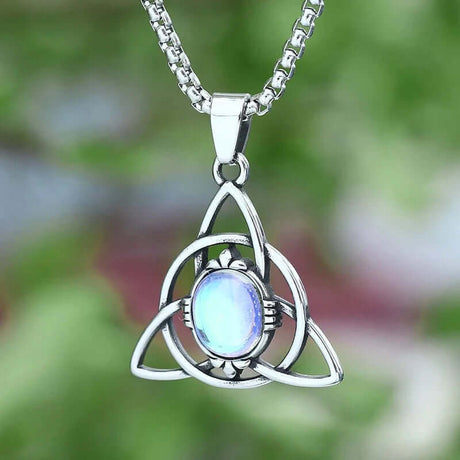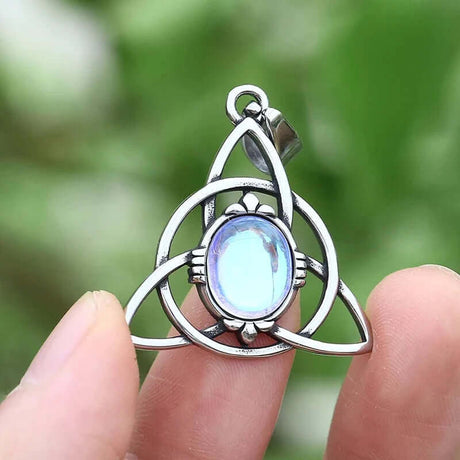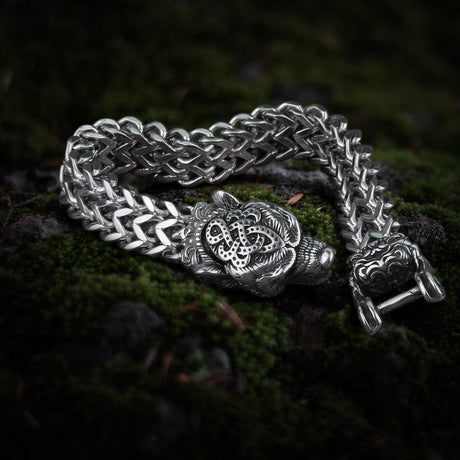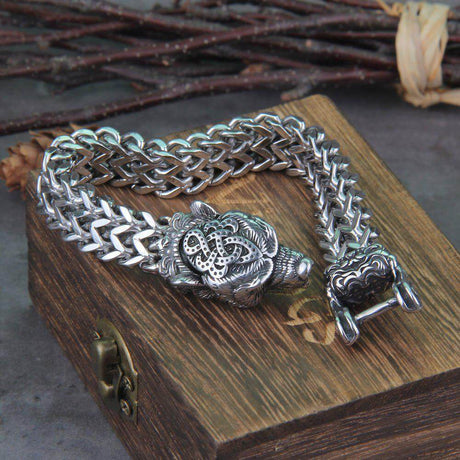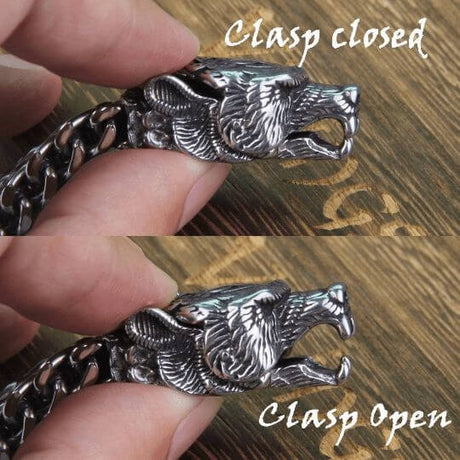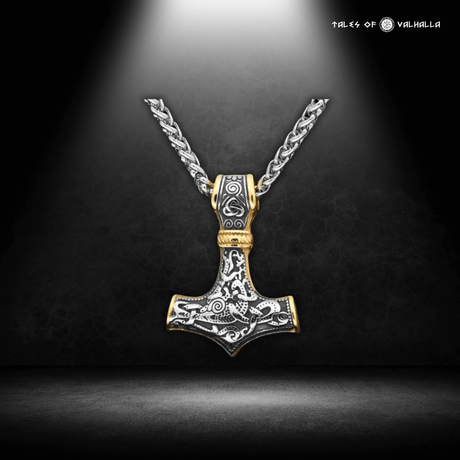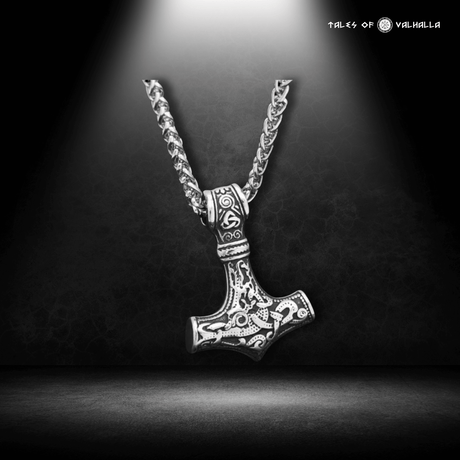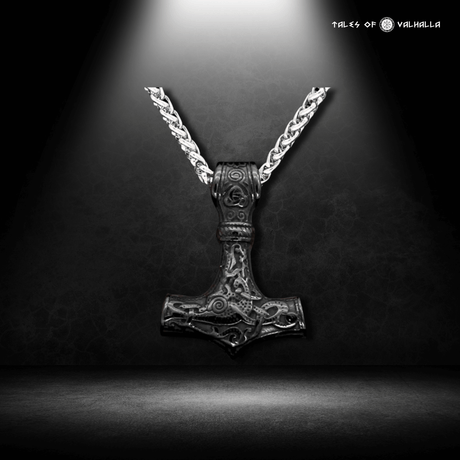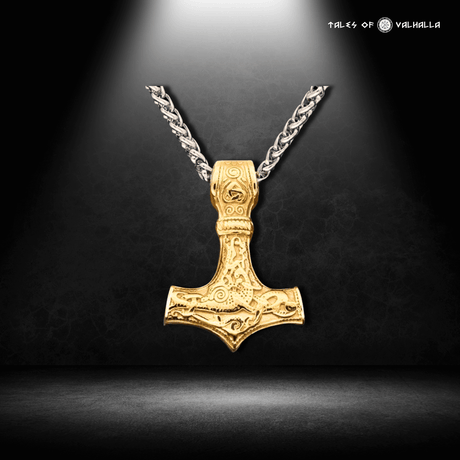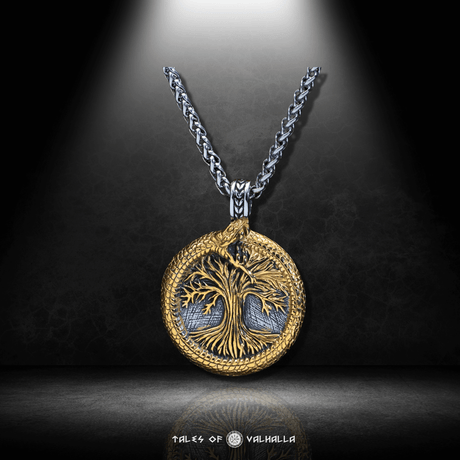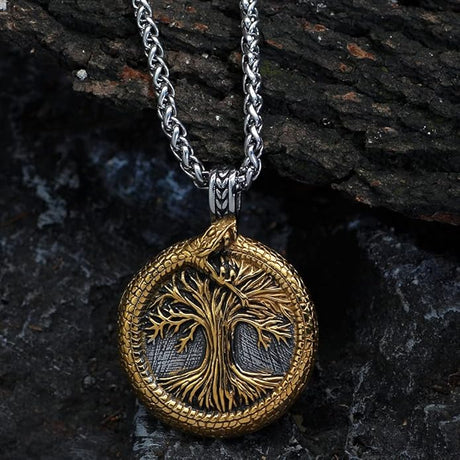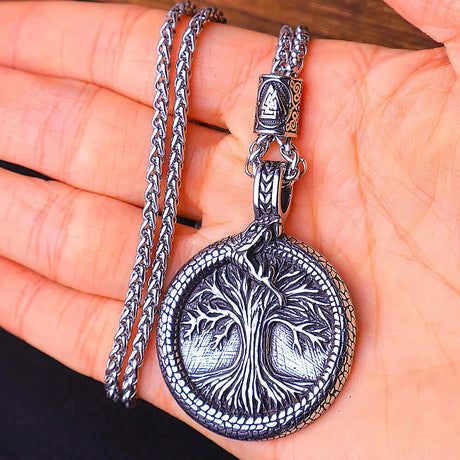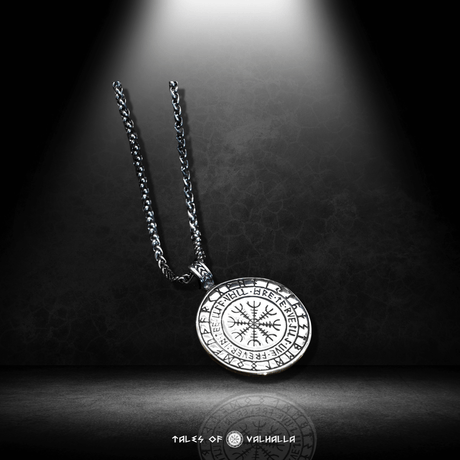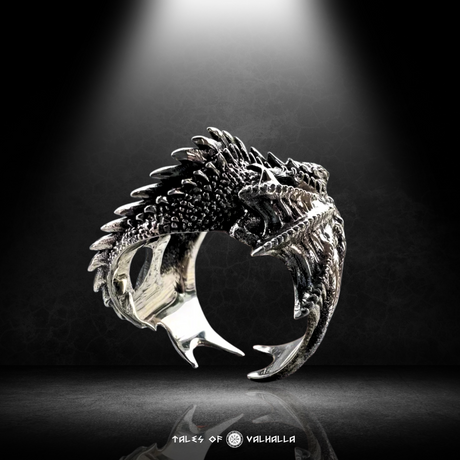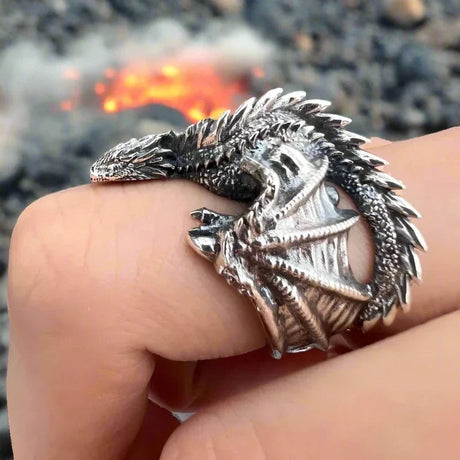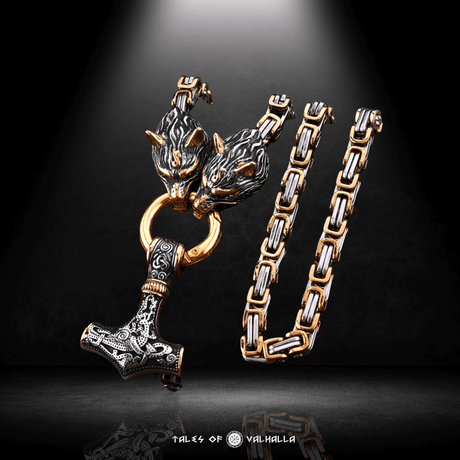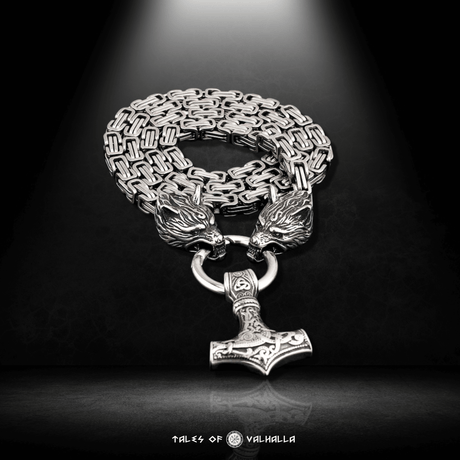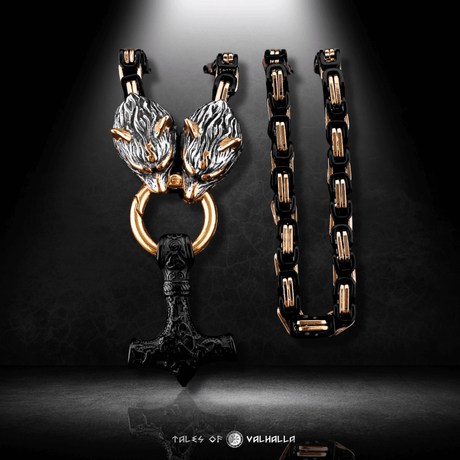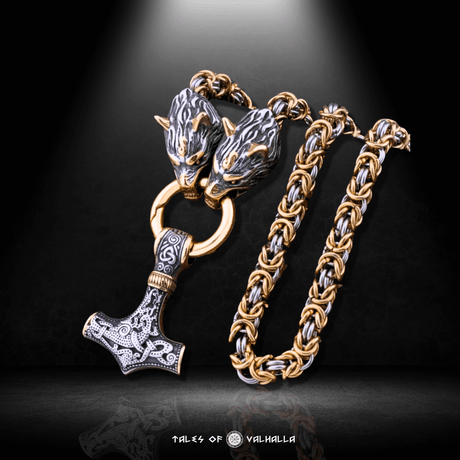In the vast and unforgiving landscapes of Scandinavia, Viking men donned clothing that was more than just a way to shield themselves from the elements—it was a powerful representation of their identity, status, and culture. Viking men's clothing was functional, durable, and intricately tied to the environment and resources available to them. These garments were designed to meet the challenges of everyday life in a region where weather conditions could be harsh, and societal roles varied. This blog will explore the materials, styles, and key pieces that defined Viking men's attire, blending historical insight with practical detail to bring Viking fashion into modern focus.
Viking Men's Clothing: Functional, Durable, and Iconic
The Viking Age, which spanned from approximately 800 to 1066 AD, was a time of exploration, trade, and conquest. The people of this era needed clothing that could withstand the cold, wet climates of Scandinavia and the demands of their lifestyle—whether that was raiding faraway lands or working the fields. For Viking men, clothing was not only practical but also a reflection of their role in society. The materials, colors, and craftsmanship of their garments signified wealth, status, and occupation, distinguishing a farmer from a warrior or a chieftain.
In this comprehensive guide, we will delve into the world of Viking men's clothing, exploring the key elements that made up their wardrobe, from tunics to trousers, cloaks to armor, and even accessories. We will also look at how these garments are interpreted today in reenactments, cosplay, and modern fashion.
The Foundation of Viking Men’s Wardrobe: The Tunic
The Importance of the Men’s Viking Tunic
The men's Viking tunic was the most essential garment in Viking men's clothing. Worn by men of all social classes, the tunic was typically made from wool or linen and extended down to the knees. This simple, T-shaped garment provided warmth and ease of movement, making it ideal for a variety of activities, from farming to raiding. Viking tunics were designed with practicality in mind but could also be quite decorative, especially for those of higher status.
For Viking men, the tunic was the foundation of their wardrobe. Over time, it became a versatile garment that could be layered with other pieces, such as cloaks or outer tunics, depending on the weather or the occasion. In colder months, a wool tunic worn over an under-tunic provided essential insulation, while in warmer weather, a single linen tunic offered breathability.
 Men’s Viking Tunic
Men’s Viking Tunic
Tunic Construction and Fabrics
The men's Viking tunic was typically made from wool, which was abundant in Scandinavia and ideal for creating warm, durable garments. Wool could be woven into a thick fabric that provided insulation, making it the perfect material for a tunic. For warmer months or indoor wear, linen was often used. Linen, made from the flax plant, was lightweight, breathable, and comfortable, making it ideal for tunics worn during physical activities or in milder climates.
Viking tunics were usually constructed with a simple cut—a rectangular body and straight sleeves. The sleeves were often long and narrow, with the cuffs sometimes embellished with decorative tablet weaving or embroidery. Wealthier Viking men might have tunics made from finer fabrics, such as imported silk, or tunics dyed in vivid colors like red or blue, which were more expensive and harder to produce.
Decorative Elements in Viking Tunics
While the basic design of a Viking tunic was simple, wealthier Vikings often added decorative elements to showcase their status. For example, chieftains and high-ranking warriors might wear tunics with intricate embroidery along the neckline, cuffs, or hem, often featuring symbols or designs that reflected Norse mythology or family crests. Tablet-woven bands, which were made from brightly colored threads, were another popular form of decoration. These bands were used to create intricate patterns that bordered the edges of the tunic, adding a touch of luxury to an otherwise functional garment.
The tunic was typically secured at the waist with a belt, which allowed Viking men to carry tools, weapons, or personal belongings. The belt was often made from leather and featured metal buckles or other decorative elements.
Viking Trousers: Practical and Comfortable
The Versatile Design of Viking Trousers
Viking men paired their tunics with trousers or breeches, which were essential for protecting the legs and allowing freedom of movement. Viking trousers came in various styles, ranging from loose-fitting to more closely tailored designs. The choice of style often depended on the wearer's occupation and the region in which they lived.
Loose-fitting trousers were ideal for everyday tasks such as farming or sailing, offering comfort and ease of movement. Tighter-fitting trousers, on the other hand, were more practical for warriors, as they allowed for greater mobility during combat without excess fabric getting in the way. These trousers were often tucked into boots or worn with leg wrappings for added protection.
Wool and Linen for Comfort and Warmth
Like the tunic, Viking trousers were typically made from wool or linen. Woolen trousers provided warmth during the colder months, while linen trousers were more suitable for warmer weather or indoor activities. The thickness and quality of the fabric could vary depending on the wearer’s status, with wealthier Vikings able to afford finer, softer wool or imported materials.
Viking trousers were often simple in design, with a drawstring or belt to secure them at the waist. The trousers typically reached the ankles and could be worn with leg wrappings, which were strips of wool wrapped around the lower legs for additional warmth and protection.
Cloaks and Outer Garments: Essential for Survival
Viking Cloaks: Warmth and Prestige
In the cold and often wet climates of Scandinavia, cloaks were an essential part of Viking men’s clothing. Viking cloaks were typically made from wool and were designed to provide warmth and protection against the elements. These cloaks were worn over the tunic and fastened at the shoulder with a brooch or pin, allowing for ease of movement.
Cloaks could vary in length, with some reaching the knees or even the ankles. Wealthier Viking men often wore cloaks lined with fur, such as fox, bear, or wolf, which provided additional insulation and signified their high status. Cloaks were also a way for Viking men to display their wealth and craftsmanship, with many cloaks featuring decorative elements like embroidery, tablet weaving, or bright dyes.
 Cloaks and Outer Garments
Cloaks and Outer Garments
- Discover now: Fur Collar Viking Cloak
Brooches and Fasteners: Functional and Decorative
Viking cloaks were typically fastened at the shoulder with a brooch, which could be simple or elaborate depending on the wearer’s wealth. These brooches were often made from bronze, silver, or even gold, and were sometimes inlaid with precious stones. The design of the brooch could also reflect the wearer’s status or affiliation with a particular tribe or family.
In addition to their functional role in securing the cloak, brooches were a significant element of Viking men’s attire. They were often passed down through generations, making them an important part of a Viking family’s heritage.
Fur Garments: A Luxury for the Elite
While wool was the primary material for Viking cloaks, wealthier Vikings could afford cloaks lined with fur. Fur-lined cloaks provided superior warmth and comfort, especially during the long, harsh winters. Fur was also a symbol of status, with certain furs being more highly prized than others. For example, cloaks lined with bear or wolf fur were considered prestigious and were typically worn by chieftains or high-ranking warriors.
Fur was not only used in cloaks but also in other outer garments, such as hats, gloves, and boots. Viking men would wear fur-lined boots and gloves to keep their extremities warm in cold weather, and fur hats were a common sight during the winter months.
Accessories and Armor: Completing the Viking Men’s Look
Belts and Pouches: Functional Fashion
Belts were an essential part of Viking men's clothing, serving both practical and decorative purposes. Viking men used belts to secure their tunics and trousers, but they also used them to carry tools, weapons, and personal belongings. A typical Viking belt was made from leather and featured metal buckles or other decorative elements.
 Belts and Pouches
Belts and Pouches
In addition to belts, Viking men often carried pouches made from leather or cloth, which were used to hold coins, knives, or other small items. These pouches were usually attached to the belt, making them easily accessible. Wealthier Viking men might have pouches adorned with decorative stitching or metal fittings, further signifying their status.
- Buy now: Viking Men Costumes
Viking Armor: Protection in Battle
While Viking armor was not part of everyday clothing, it was a critical component of a Viking warrior’s attire. The most common form of Viking armor was the leather jerkin, which provided protection without restricting movement. Wealthier Vikings might have worn chainmail, which offered more substantial protection but was expensive to produce.
In addition to body armor, Viking warriors often carried shields and wore helmets. Contrary to popular belief, Viking helmets did not have horns; this is a modern misconception. Viking helmets were typically simple in design, made from iron or leather, and were designed to protect the head without obstructing vision or hearing.
Footwear: Sturdy and Practical
Viking Boots and Shoes
Viking men needed durable footwear that could withstand the rugged terrain and harsh weather conditions of Scandinavia. Viking boots and shoes were typically made from leather, which was tanned and treated to make it water-resistant and durable. These shoes were designed to provide protection and comfort during long journeys or raids, as well as during everyday tasks like farming or hunting.
Viking boots were often ankle-high and secured with leather straps or laces. Wealthier Vikings might have boots lined with fur for added warmth during the winter months. Footwear was often simple in design, but like other Viking garments, it could be adorned with decorative stitching or metal fittings to signify wealth and status.
 Viking Boots and Shoes
Viking Boots and Shoes
- Explore Viking Boots and Shoes collection
Practicality in Design
The design of Viking boots and shoes prioritized practicality. These shoes were often handmade, with each pair tailored to the wearer’s foot to ensure a comfortable fit. Viking footwear was also designed to be easily repairable, with leather patches or new soles added as needed. This emphasis on practicality ensured that Viking men could remain on their feet for long periods, whether they were working, traveling, or engaging in battle.
Viking Clothing in Modern Culture: Reenactments, Cosplay, and Fashion
Modern Interpretations of Viking Men’s Clothing
Today, Viking men's clothing has found a resurgence in modern culture, particularly through historical reenactments, festivals, and cosplay. Enthusiasts of Viking history take great pride in creating historically accurate Viking outfits, using natural materials and traditional techniques to recreate the garments worn by Viking men centuries ago.
In addition to historical reenactments, Viking fashion has become a popular theme in modern media, with TV shows like Vikings and The Last Kingdom sparking renewed interest in Viking culture. Cosplayers and fans of Norse mythology often draw inspiration from these shows, blending historical accuracy with fantasy elements to create unique and visually striking men's Viking outfits.
Viking-Inspired Fashion
The influence of Viking men's clothing can also be seen in modern fashion, with designers incorporating elements of Viking style into contemporary garments. Viking-inspired fashion often features natural materials, earthy tones, and minimalist designs, reflecting the practicality and durability of traditional Viking clothing. These modern interpretations of Viking fashion offer a way for people to connect with the past while embracing a timeless and rugged aesthetic.
Conclusion
Viking men’s clothing was not just about protection from the cold—it symbolized their identity, status, and craftsmanship. From essential tunics to practical trousers and cloaks, Viking attire balanced functionality with style. Today, brands like Tales of Valhalla keep this legacy alive, offering authentic Viking-inspired clothing and accessories that merge history with modern fashion. Whether for historical reenactments or personal style, exploring Viking men’s clothing through Tales of Valhalla provides a unique connection to the Norse culture, where function and fashion seamlessly intertwined.










